A few weeks after I got my first telescope, I took it out one evening as far as I could get from the city lights, hoping to look at more than the moon and planets. Unfortunately, the night I chose had also been chosen by a waxing gibbous moon. The sky was almost as bright as a moonless night in my backyard. But all the same, I aimed it at a patch of sky high above the northwest horizon. What I saw didn’t look like much—just a blur of light—but I still felt the chills and not just from the cool December evening air. That blur of light was the Andromeda Galaxy, 2,500,000 light-years away. And I was seeing it with my own eyes.
The views expressed in this article reflect those of the authors mentioned, and not necessarily those of New Creation.
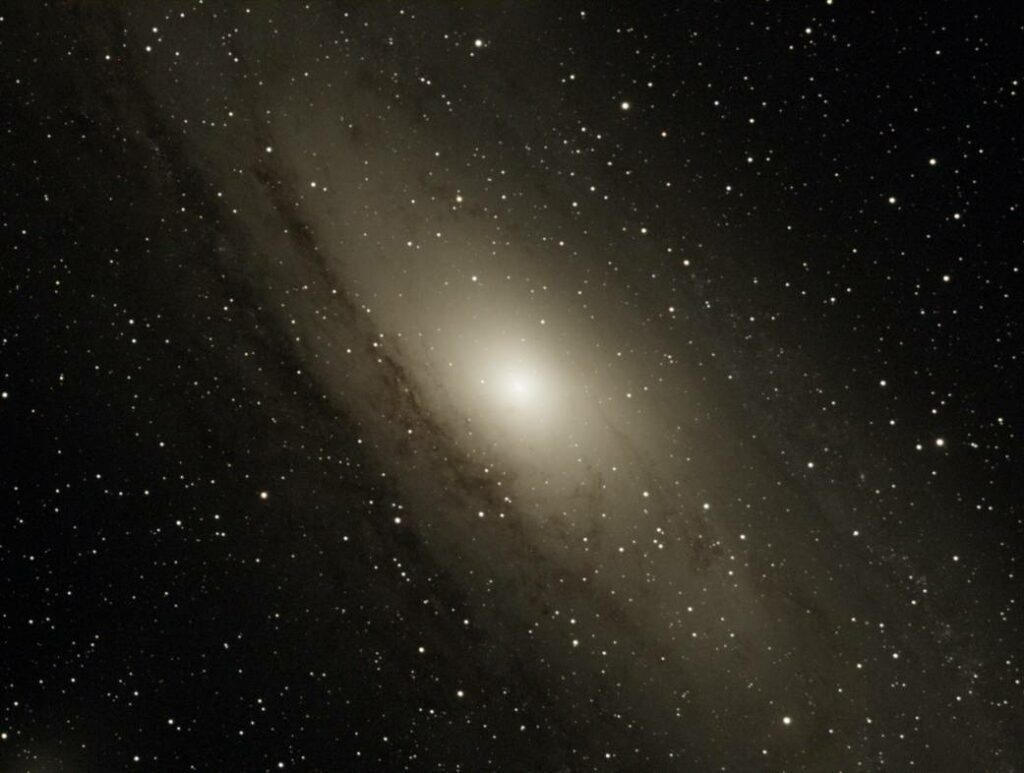
There’s something awe-inspiring about the vastness in astronomy—vast sizes, vast energy, vast distances. Everything in astronomy is so immense, astronomers even have their own set of metrics for just about everything they measure. Take the distance to the Andromeda Galaxy. The only way to measure that scale of distance in a form that’s at least nominally comprehensible to our minds is by the speed of light. And so astronomers use the light-year—the distance that light travels in a year.
When you recall that light travels at the speed of 186,000 miles/second, you realize that even this metric is hardly comprehensible. But that’s the awesome nature of astronomy again.
And yet, the vast distances in astronomy are more than awe-inspiring. They also raise significant questions about time, space, and history.
Deep Questions from Deep Space
When you look up at the Andromeda Galaxy on a dark winter night, the light reaching your eye is finishing a journey that, according to our understanding of the speed of light, has taken well over two million years. That very fact staggers the mind. It also raises deep questions: How has this galaxy changed in the two million years since emitting the light that I’m seeing now? Does this galaxy even exist today? How can I know if I’m even looking at a real object?
For a student of Scripture, there’s the very big question: How can this light have traveled 2.5 million lightyears in less than 10,000 years of Earth history?
Grappling with the Light Travel Time Problem
There have been varying responses to this latter question.
On one hand, many Christians take the facts of science at face value—the speed of light, the vast distances between astronomical objects—and then find an understanding of the historical narratives of Scripture that harmonizes with those facts. It’s not the only discrepancy between our modern scientific understanding and the Scripture, but the vast distances in space, and the vast amounts of time inferred by those distances, comprise a major reason why many Christians seek to find an understanding of Scripture that doesn’t take its chronology at face value.
But on the other hand, there are Christians who take the chronological history of Scripture at face value. They seek to harmonize our understanding of science with that history. Over the last several decades, this question—called “the light travel time problem”—has provoked a variety of responses among young-earth creationists. They range from simple denial of the problem to full-fledged cosmologies. In this article we will survey a sample of proposed solutions by young-earth creationists to the light travel time problem.
Solutions to the Light Travel Time Problem
Question the Distance
One way of dealing with this problem is to question the distances involved. Are the stars really that far away? This quick fix isn’t so common nowadays, as our understanding of deep space has grown. However, creationist literature has suggested it in the past. How do we really know the universe is as big as scientists say it is?
The main method of directly measuring astronomical distances is parallax. Astronomers measure the location of a star relative to surrounding, more distant stars. Six months later, they measure the same star again. Because our measurement is from a different point on the earth’s orbital path around the sun, the apparent location of the star shifts relative to the surrounding stars. The closer the star, the larger the parallax. Using trigonometry, astronomers can derive the distance to the star from those measurements.
Ground based parallax is reliable (within 20%) to a distance of 65 lightyears. With the advent of satellite parallax measurements, we can now get reliable measurements out to 1,000 light years.
Beyond the distances we can derive from direct methods, there are many indirect methods which reach even further. They provide us with both galactic and extragalactic distances. Many of these methods are built on well-understood physics and theories of stellar development. An overview of these distance determination methods is given by Faulkner; we’ll just look at one such method here.1
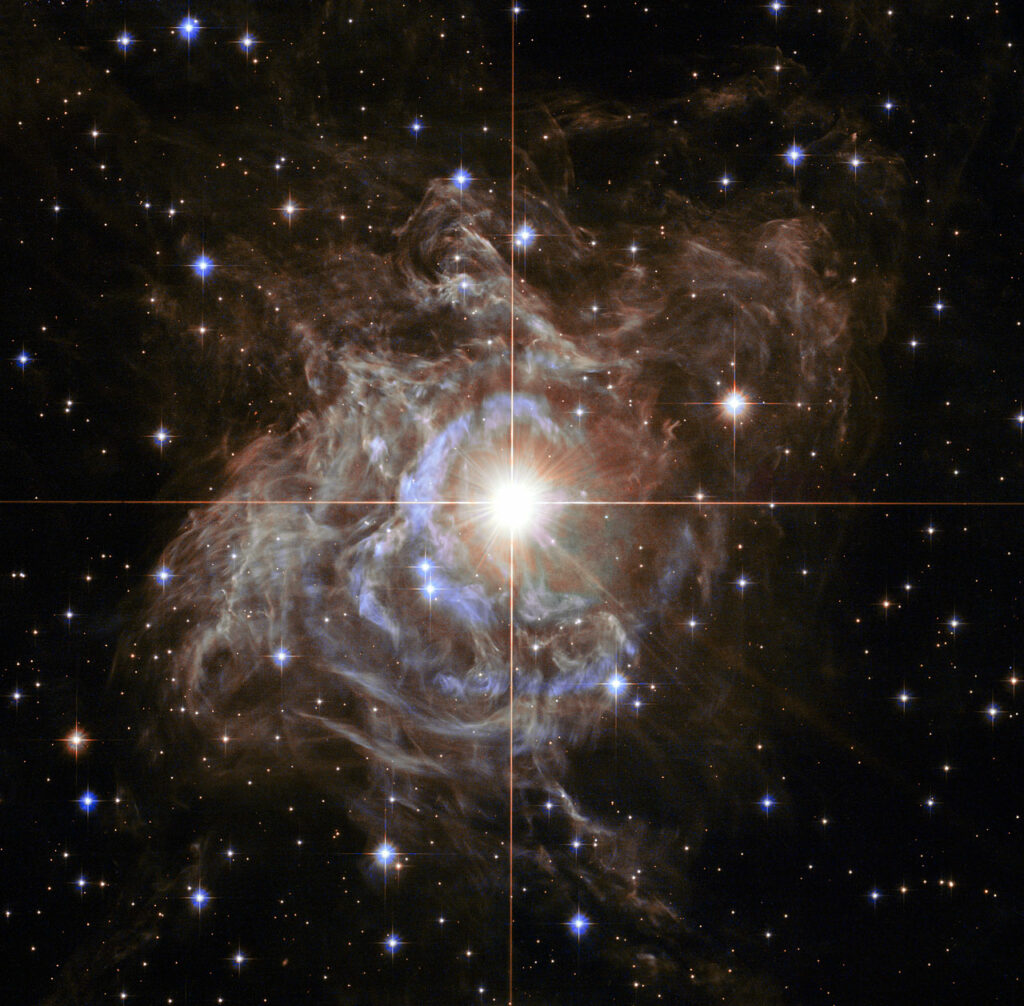
Cepheid variable stars have a distinctive pattern of variation in brightness over a rather short timeframe (within days to months). The brightness of a given Cepheid variable is related to the length of its period. Astronomers use this to determine the absolute magnitude (inherent brightness) of a given Cepheid. With the absolute magnitude of a known star, as well as the apparent magnitude (how bright the star appears to us), astronomers can calculate the distance to that star. Stars such as Cepheid variables are known as “standard candles”. They can be used to determine distances in our own galaxy as well as extragalactic distances. In the case of Cepheids, the distances determined reach up to tens of millions of lightyears.
There are many other methods which can determine the great distances in our universe. All of them agree with each other rather well. Together, these methods don’t leave room for supposing that the stars really aren’t more than 10,000 light years away.2 Even if we supposed the universe is smaller than we think, it doesn’t solve the problem for young-earth creationists. The light travel time problem begins with Adam. When he looks up at the evening sky on the sixth day of Creation Week, he sees stars. But he didn’t have thousands of years for the starlight to reach him. God created the stars to be for man’s use, and they must have been visible to him from the completion of Creation Week.
Light Created In Transit (Mature Creation)
Mature creation is the idea that everything in the universe came into existence during creation week instantaneously, and fully developed. This view has been held for centuries, in a general sense. The plants created on Day Three must have been created mature, with fruit trees bearing fruit for man. Though the plants would be less than 24 hours old, they would have appeared much older. In other words, God created plants with an “appearance of age.” This same concept applies to the creation of Adam.
As our understanding of the size of the universe has developed, mature creation has come to be applied to astronomy with the idea that stars were created with their light “in transit” to earth. Stars were created with their associated starlight already reaching the earth. In essence, the beam of light, which we see on earth and associate with the star, was painted in the sky across the vast expanse of space between that star and the earth.
When describing the creation of plants, or of Adam and Eve, mature creation makes intuitive sense. But when applied to the creation of the entire astronomical realm, things get more complicated. As a result, several problems have arisen with this view.
Perhaps the greatest problem raised is that starlight isn’t just a static phenomenon. The light we see from distant stars gives us information about these stars, particularly about their history. We can see events and processes occurring in distant space such as supernovae, colliding galaxies, et cetera. But in this view, they never actually happened, because the objects involved are greater than 6,000 light years away. Rather, this supposed ‘history’ would have to be painted into the light beam that reaches our eye. An example would be Supernova 1987a. This event, given its distance, would never actually have happened. The star we saw in that galaxy all these years until 1987 never existed. It was created as a neutron star, with an entire history painted into a light beam emanating from that direction in space. And researchers have suggested that this gives the idea of deception in the creation.
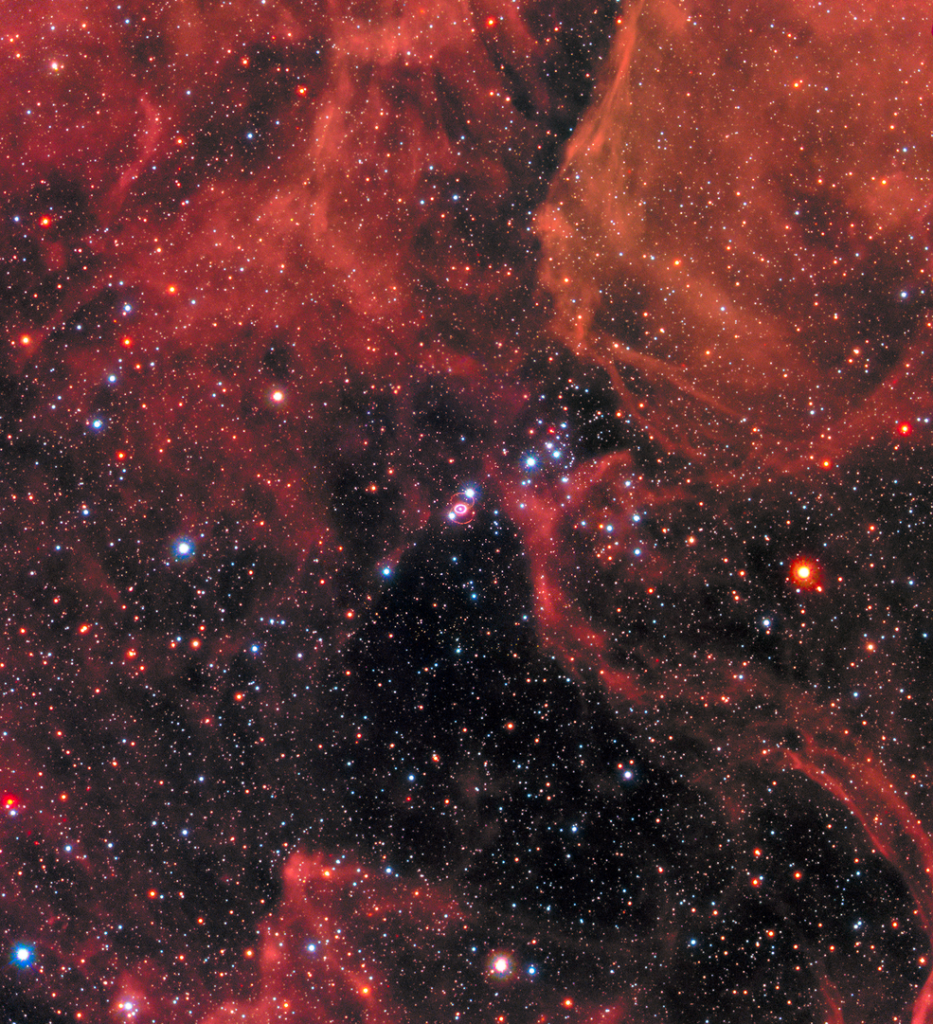
In response to this critique, supporters of “light in transit” argue that certain elements of creation must have been created with an appearance of age, for their very function. Beyond that, many miracles in the Bible involved the creation of things with apparent age. The wine Jesus made from water in John 2 had the characteristics of aged wine at only a day old. No one would argue this was a case of deception —the very nature of miracles is their unconformity to natural law.34
Of course, one can respond to that with a question. Is the historical information contained in starlight essential for its function? Do we need apparent histories of events like galactic interaction and stellar evolution? The evidence of process and history in astronomy indicates the creation of the stars involved more than shooting light beams across space.
C-Decay (CDK)
In the 1980s, Barry Setterfield proposed that the speed of light (c) is not a constant, but rather has changed over time.4 Using historical measurements of the speed of light, he found deviation from the current measured value. He used this to show that the speed of light was much faster in the past. He proposed that the speed of light has been decreasing since the creation, leveling off to its present, constant value around the year 1960.
This idea originally had much acceptance. However there were a couple of problems that led to its abandonment among most creationists.
The first problem lies with the data used to create the curve of decay. It could be expected that earlier measurements were not as accurate. Modern technology advanced measurements of the speed of light, converging on what we now know as the current value. Indeed, if early measurements tended to err on the faster side when determining the value of c, then it makes sense that subsequent measurements would gradually work their way down, leveling out at the currently understood value.5
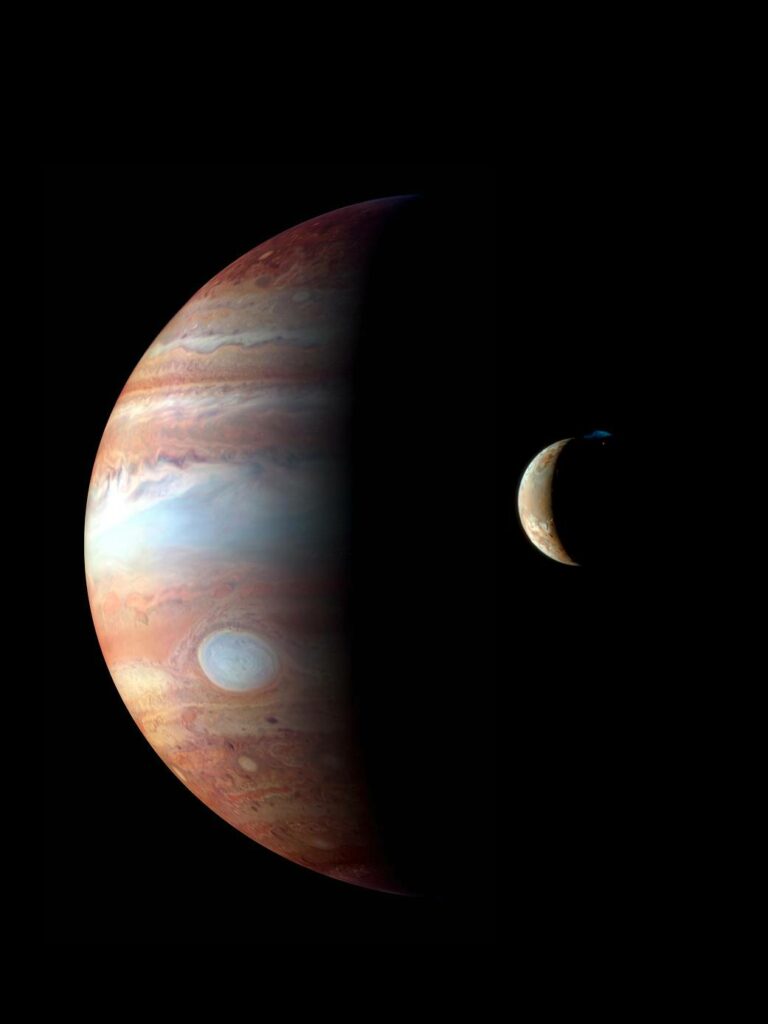
In addition, some suggested that a phenomenon known as tracking might have played a role in historical measurements. Eugene Chaffin defines tracking as “the tendency for researchers to report an experimental result close to the results of their predecessors.”6 He uses the example of the history of the measurement of the charge of the electron. In the early measurements of this value, the researcher’s experiment had a mathematical error in it, which affected his result. Further experiments by different researchers after that time, using different methods and thus completely bypassing that mathematical error, tended to only slightly deviate from that first measurement. Over time, the measurement increased to what we now know is the correct value.
We could interpret this as the value changing over time; or it could be the result of “tracking.” In other words, the later scientists believed that because their numbers were different from the original figures, they must have made an error. They “corrected” their numbers to make them closer to the original figures. In the case of this measurement, the first experiment was repeated later, this time with a correction for that mathematical error, and the result was in line with the now-established value. Most likely, electrons did not actually change in charge over time; these differing results probably resulted from progressively refined measurements as scientists stopped tracking.
Similarly, a reanalysis of the earlier measurements of the speed of light by Eugene Chaffin, this time with higher quality data, demonstrated that the speed of light three centuries ago was extremely close to the currently understood value.7
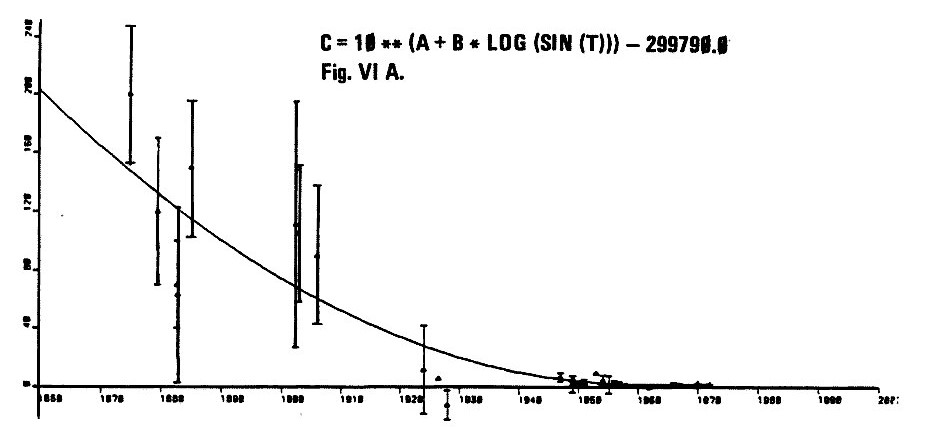
Another problem with this model is that the speed of light isn’t just a free parameter; it’s a property that relates to other physical processes. Take for example, E=mc2. This famous equation describes the relationship of energy to mass. The c in the equation is the speed of light, which is of course a very big number. Here c is squared—c times itself—which is bigger still. This equation is saying that the energy (E) present in any mass (m) is equal to the mass times the speed of light, squared. That’s an enormous amount of energy. If you increase the speed of light as you go back in time, then that becomes even more enormous still. So by changing the speed of light, you change the nature of matter and energy as well.
Setterfield took this into account; he suggested that radioactive decay was also much faster in the past. This would account for the “old radiometric dates” we find in the rock record. However, it’s unlikely that life could have survived in a universe with radiometric decay accelerated at such rates.9 But suffice to say, a higher value for the speed of light would radically alter the way the entire universe operates.
Gravitational Time Dilation
Since 1994, Russ Humphreys has been working on a biblical cosmology based on Einstein’s Theory of General Relativity (GR). He published his first cosmology in the 1994 book Starlight and Time. Since then, he’s come up with a second version,10 and is working on a third. Here we shall give a basic overview of the ideas behind these relativistic solutions to the light travel time problem.
According to General Relativity, space itself is actually something (fabric, ether, etc.). The Bible also speaks of space being a created thing. Genesis 1 talks about the creation of the expanse (“firmament” in the KJV) between the waters on Day Two.
This fabric of space can be distorted, or stretched, by gravity. This explains how objects such as the sun and the moon can affect each other gravitationally. The gravity of the sun affects the fabric of space between itself and the earth, and thus affects the earth.
If the idea that space is actually something wasn’t strange enough, the distortion of space also affects the flow of time. Gravity distorts time. This isn’t just gravity making things happen slower. This is gravity slowing down the actual flow of time— the ticking of your watch, the speed of the earth’s rotation, the rate at which you age. The effect is measurable; in fact, GPS satellites have to account for this gravitational time dilation, as it’s called. Positioned above the earth’s surface, their clocks tick slightly faster— keeping with the faster flow of time at that higher elevation.
So that’s the physics lesson for this section. Gravity distorts time.
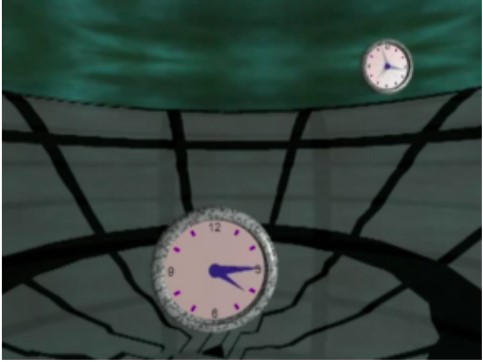
In Genesis 1:6-8 God creates the expanse to divide the primeval water into “the waters above” and “the waters below.” Verses 14-16 then say that God set the sun, moon, and stars in that expanse. From these verses, Dr. Humphreys concludes that the universe is finite and bounded (it has an edge). He also concludes the earth is near the center of the universe because it is “the waters below” the expanse which become our fair planet.11
Now, to put things simply, if the universe has a center and an edge, and if the earth is near the center, then the gravitational potential is higher near the earth than in the distant cosmos. This would cause the clocks on earth to tick slower than clocks in the distant cosmos.
The Bible speaks of God having “stretched out the heavens,” in connection with the events of Creation Week (Isaiah 42:5, 44:24; Jeremiah 10:12; Zechariah 12:1). That implies space was smaller before, which increased the gravitational potential slowed the flow of time on earth. Dr. Humphreys’ model suggests that this gravitational time dilation would allow starlight sufficient time to reach earth. This would be billions of years, by their own “clocks”, while on earth only one day elapsed.12
Anisotropic Synchrony Conventions
Einstein Synchrony Convention [ESC] is how we normally look at the speed of light, c in all directions. There is another convention, however, called Anisotropic Synchrony Convention (ASC). “Anisotropic” refers to the different speed of light in one direction as opposed to the other. First proposed by Newton, this model is further explained in its more refined form in The Physics of Einstein.13, 14 It is also based in relativity. However, instead of time relativity, this model focuses on the relativity of simultaneity.
The relativity of simultaneity is, of course, something we all think about everyday… okay, not quite. But it turns out that when it comes to stellar distances, it’s actually very important. Take, for instance, the case of the Crab Nebula. It is the remnant of SN1054, a supernova event observed by Chinese astronomers over a thousand years ago. When we see (or discover ancient records of) a supernova event like this, we ask: When did this happen? There are two answers and they involve observed time and calculated time.
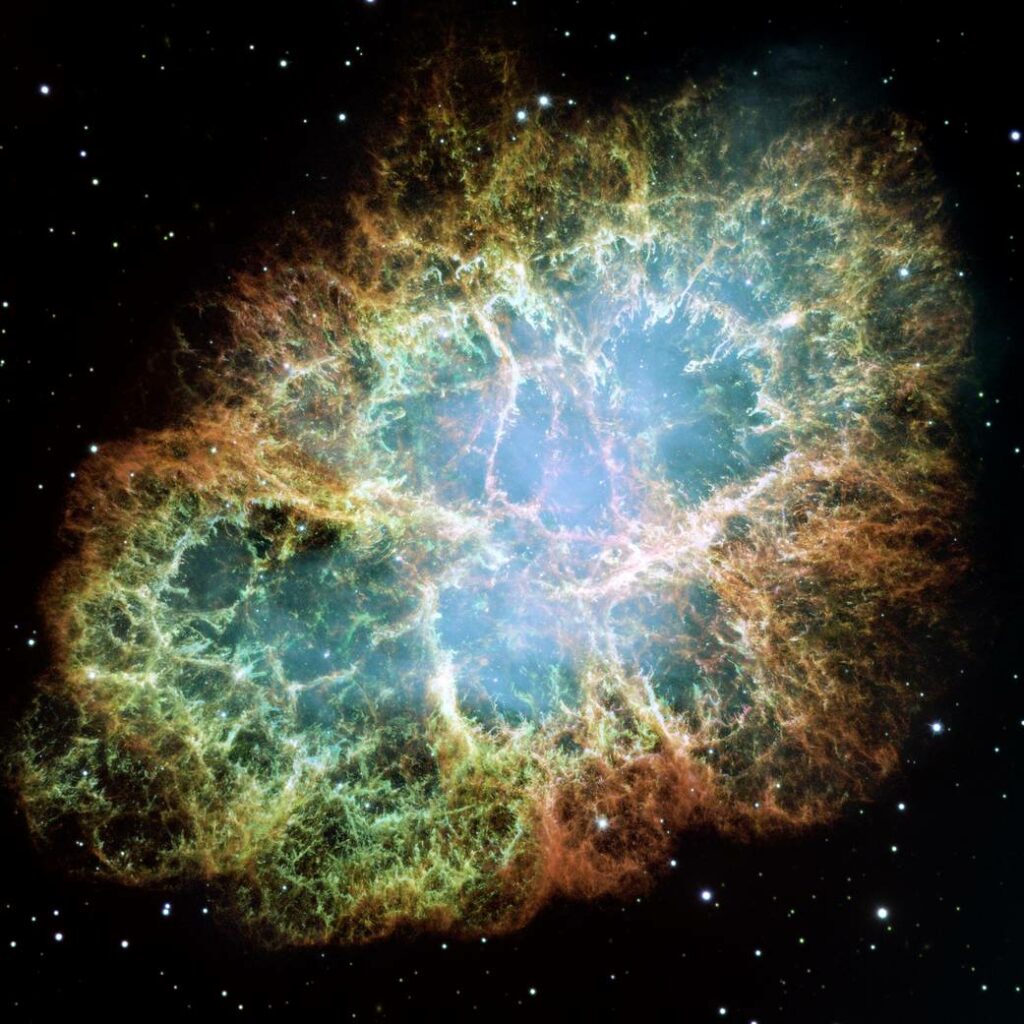
One answer seems obvious, at the surface: in the case of this event, it happened in 1054 AD. And indeed, astronomers named it SN1054, acknowledging that the event was seen to occur in the year 1054 AD. That is the observed time; dating an event as occurring at the moment we saw it occur. But if you ask those same astronomers when that event happened, they would say it happened somewhere around 4946 BC. That’s 6,000 years before astronomers observed it from earth — taking into account both the distance to that event (6,000 light years), and the speed that the light from that event traveled to our eyes (1 lightyear per year). That is the calculated time.
Which is the correct time? According to relativity theory, either one can be.
We know the speed of light (c) is constant. But there’s a curious little caveat on our measurements of that speed. We can’t actually measure the one-way speed of light. We only measure the two-way speed of light (from A to B back to A again) and split the distance.
A quick thought experiment to demonstrate. Say we have a long hallway. There’s a mirror at one end, and a flashlight and a stopwatch at the other. We flick on the flashlight, sending a light beam down the hall, and start the stopwatch. The light beam travels to the mirror, bounces off it, and reflects back to us. We stop the stopwatch when the light arrives back to where we are standing.
Now, we subtract the departure time from the arrival time, and divide the result by the distance traveled (to the end of the hall and back). But does the light travel toward the mirror at the same speed that it travels back to us? Because we simply halve the recorded time, we have no way of knowing if the travel time is the same to and fro. It’s possible the light travels at half of the “speed of light” toward the mirror, and reflects back at infinite speed. In either case, the time we measure would be exactly the same.
Plausibly, we could postulate the inbound speed of light is infinite, so long as its outbound speed is ½ c. This would maintain c as the two-way speed of light. There is no way to measure the “actual” one-way speed; we can pick any value as a matter of convention, provided the round trip speed of light remains c.*
Theoretically, you see how we could plausibly and scientifically use either observed time or calculated time as a convention for defining the time of an event in the distant universe.
The obvious implication is, if we use observed time and an anisotropic convention in which the inbound speed of light toward earth is infinite, then the light travel time problem disappears. The question is then, what convention is recorded in the creation account in Genesis?
Jason Lisle gives two reasons that it uses an anisotropic synchrony convention, where the inbound speed of light is infinite.15 First, people have only begun to understand calculated time recently; it would have been incomprehensible through most of history. Since the Bible was written to be understandable, it makes sense that it would use the most intuitive convention, ASC. Secondly, he says the text suggests the creation of the stars was nearly simultaneous with the fulfillment of their function. Genesis 1:14-15 describes the creation of the stars, and states their function—“to give light upon the earth”. It then concludes with the phrase “and it was so.” The simultaneity of the two events, the creation of the stars and their light reaching the earth, indicates the text is measuring these events based on observed time, not calculated time.
Arguably, this approach comes down to defining away the problem. Since the one-way speed of light is a matter of convention (in this case, infinite speed toward earth, and ½ c away from earth), one could just as well reverse the proposition, and say that the in-bound speed of light (toward earth) is ½ c, and that the outbound speed is infinite. Perhaps it is for these reasons that ASC hasn’t caught on much among creation astronomers. Regardless, it’s one of the more popular solutions to the light travel time problem at present.
Dasha
In 2013, Danny Faulkner proposed what he calls the “dasha” solution.16 (“Dasha” comes from a Hebrew verb used in the Genesis account regarding the creation of plants. More on that in a moment.) Faulkner’s idea is that the creation of the stars involved forming them from previously created material ( made on Day One). As part of His formative work, God miraculously propagated the starlight through space to earth at an accelerated rate. In this way, the light reached earth within the timeframe of Day Four.
On the surface this sounds like another way of phrasing the “light in transit” model. But the distinction here is that the light from these stars actually did leave the star and travel to earth. Each beam of light corresponds to real stellar events. This contrasts with light in transit, where the light beam was “painted” in place between the star and the earth.

An analogy Danny Faulkner uses to describe this process is the creation of plants on Day Three. The Genesis account here uses the Hebrew verb שאָׁדָּ (dasha), usually translated as “bring forth” or “sprout.” This implies that the plants didn’t just instantly appear, but rather their creation involved process. Of course, from the context, we know that this process took place much faster than normal rates, as the creation of plants was completed by the end of Day Three. Thus we know that the creation of plants involved a miraculously rapid process. Danny Faulkner proposes that the creative acts of Day Four involved this same miraculous process.
One distinction of this model, compared to most of the other ones we’ve looked at, is that this is entirely an appeal to a miracle. There isn’t any scientific description of what this rapid acceleration of light may have looked at, or what physical evidence we might find in the cosmos of this event having occurred. Of course, this is the Creation Week. We know that the whole of creation was a miraculous event. Describing the events of the Creation Week in terms of miracles isn’t out of place.
Excursus: Natural Law and Creation Week
This brings up an interesting topic which relates to how creation astronomers are looking at the light travel time problem. What is the relation of natural law to the Creation Week?
One thing to point out is the difference between “natural law” and “naturalism.” “Natural law” is a description of how the universe (or nature) operates. “Naturalism” is the idea that nature is all there is (there is no “supernatural”). It can be easy to confuse the two, to think that speaking of “natural law” is a naturalistic thing. But what we call “natural law” is the way God sustains the universe, the laws He has set in place to govern it. .
So, the question is: Can we apply scientific descriptions to the events of the Creation Week? To what extent were natural processes involved in the Creation Week?
One approach is that God’s creative work, during Creation Week, differs entirely from His sustaining work, which we call “natural law.” Thus, we can’t take natural law, as observed in the present, and impose it on the events of Creation Week. In a sense, that is uniformitarianism—using the present as the key to the past.
The other approach is that God established the laws which govern physical things at the time He created them. For example, with the creation of light on Day One comes the physical laws relating to the behavior of light. And thus, taking into account that the events of Creation Week were miraculous, one can look at the biblical account and see if there are ways to devise scientific models (descriptions) of how God might have created. Then, using these models, one can make testable predictions regarding the structure of the universe.
Summary
All the varied and diverse models that have been proposed to answer the light travel time problem highlight the lack of a cohesive model of creation astronomy. Perhaps this is due in part to the fact that the creation account in Genesis gives very few details about the astronomical creation. Many proposed solutions to this problem contain little context in any broader understanding of the universe’s structure, or cosmology. But a solution to this problem needs to fit in within a creation cosmology. And the fact is, there’s a lot more to creation astronomy than how light from distant stars reached earth in the Bible’s short timescale.17 There still is a lot more to learn about the amazing universe that God created.
God’s creation is incomprehensibly vast, and the question of how starlight from distant sources got here within the Creation Week is reasonable to ask. But we need to keep in mind that nothing is too hard for God. The creation of the universe itself was a miracle, and we know the God who spoke the stars into existence is more than able to get their light to this earth, so that they could fulfill their divine purpose.
Notes:
*This idea, that the one-way speed of light is impossible to measure and can therefore be assigned by convention, is called “the conventionality thesis.” There is disagreement in the physics community as to the validity of this thesis; interested readers can refer to Malament18 and Unnikrishnan.19
**Dennis, Philip W. 2020. “Critical analysis of Humphreys’ shell metric cosmology.” Journal of Creation 34(2), 124-132. (See Footnote 12)
Footnotes
- Faulkner, Danny. 2013a. “Astronomical Distance Determination Methods and the Light Travel Time Problem.” Answers Research Journal 6 211–229. ↩︎
- Faulkner, 2013a, 211–229. (Footnote 1) ↩︎
- DeYoung, Don B. 2010. “Mature creation and seeing distant starlight.” Journal of Creation 24(3), 54-59. ↩︎
- Setterfield, Barry. 1981. “The Velocity of Light and the Age of the Universe.” Creation 4(1), 38-48. ↩︎
- Humphreys, D. Russell. 1988. “Has the Speed of Light Decayed Recently? – Paper 2.” Creation Research Society Quarterly Volume 25. ↩︎
- Chaffin, Eugene. 1992. “A Determination of the Speed of Light in the Seventeenth Century.” Creation Research Society Quarterly, Volume 29, 115-120. ↩︎
- Chaffin, 1992, 115-120. (Footnote 1) ↩︎
- Setterfield, Barry. 1981. “The Velocity of Light and the Age of the Universe.” Creation 4(1), 38-48. ↩︎
- Aardsma, Gerald E. 1988. “Has the Speed of Light Decayed Recently? – Paper 1.” Creation Research Society Quarterly Volume 25. ↩︎
- Humphreys, D. Russell. 2008. “New time dilation helps creation cosmology.” Journal of Creation 22(3), 84–92. ↩︎
- Humphreys, D. Russell 1994. “A Biblical Basis for a Creationist Cosmology.” Proceedings of the International Conference on Creationism: Vol. 3, Article 25, 255-266. ↩︎
- While this model is quite popular in creationism today, it has garnered some criticism in the creation physicist community regarding the mathematics involved. Those interested in digging further into the technical discussion may refer to Dennis** ↩︎
- Newton, Robert. 2001. “Distant starlight and Genesis: conventions of time measurement,” TJ 15(1). ↩︎
- Lisle, Jason. 2018. “The Physics of Einstein: Black Holes, Time Travel, Distant Starlight, E=mc^2.” Biblical Science Institute ↩︎
- Lisle, Jason. 2010. “Anisotropic Synchrony Convention—A Solution to the Distant Starlight Problem.” Answers Research Journal 3, 191–207. ↩︎
- Faulkner, Danny. 2013b. “A Proposal for a New Solution to the Light Travel Time Problem.” Answers Research Journal 6, 279–284. ↩︎
- Upton, James. 2011. “Beyond Distant Starlight: Next Steps For Creationist Cosmology.” Answers Research Journal 4, 1–9. ↩︎
- Malament, D., 1977. “Causal Theories of Time and the Conventionality of Simultaniety.” Noûs, 11, 293–300. ↩︎
- Unnikrishnan, C. S. 2008. “New Measurement of the One-Way Speed of Light and its Relation to Clock Comparison Experiments.” The Eleventh Marcel Grossmann Meeting. September 2008, 2512-2514. ↩︎

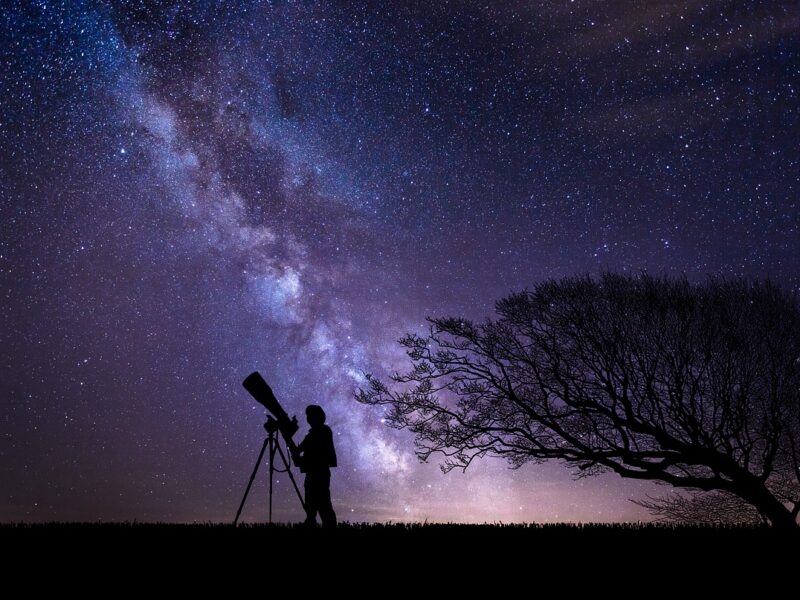



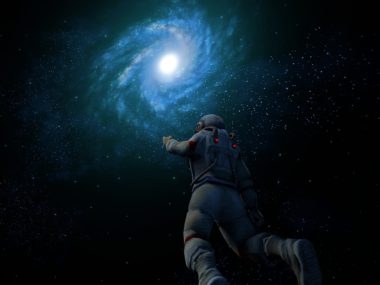
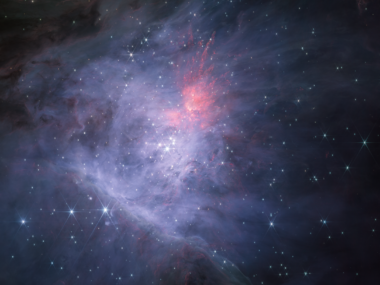





Great article that is thought provoking. Just a minor point, you might want to check to Hebrew spelling of the verb DASHA from Genesis 1:11, דּשׁא. Thanks for your research.
Thanks Hannah, great job! There is another possibility, one that sits somewhere between dasha and the mature creation model, and that is the Conceptual Universe model. That is, the universe always exists in the mind of God. This is true for our present universe, and for the one that will exist in say, a million years if the Lord does not tarry, or if he does tarry and changes the one we are currently familiar with. In other words, right “now” in the mind of God, a very different conceptual (yet to be actualized) blueprint of the universe “exists” and is, therefore, “real” to God. In that yet future universe, a number of cosmological and geological phenomena are “changed” and different than in the universe as it now exists to us. I think we can all agree that something like this must be true given Scripture’s account of God “knowing the beginning from the end.” So, why can’t the same thing be true for the conceptual universe that existed in the past, “before” Creation Week? In that conceptual, abstract blueprint, SN1987A did actually “explode” and so the information we see today built into the gamma rays is actually “real” because it was “real” to God. In this model, God just “decided,” for his own reasons, to actualize this particular version of the universe, at this particular stage of its “maturity” (actually, the stage that existed at its inception about 6000 years ago). He literally “spoke” this abstract or conceptual blueprint into time and space. Anyway, I think this is a model that fits very well with God as sovereign and not only knowing everything in advance, but actually having ordained it from eternity past. Ken
Augustine of Hippo commented that if nature seems to conflict with scripture, either you are misinterpreting nature or you are misinterpreting scripture. It is clear that the creation days in Gen 1 were literal, 24-hour days and that creation week was only a few thousand years ago. It is also clear that there was no death for humans or sensient animals before the fall and that there was a catastrophic global flood. On all these points, young earth creationism is spot on. However, most YECs make a very simple exegetical error in Gen 1 that leads them to think there is a light travel time problem in the universe. The truth is that the account of the first day of creation week starts in Gen 1:3, not Gen 1:1. Look carefully at the structure of Gen 1 and notice the formula that introduces the accounts of each of the creation days. The formula is “And God said,” and it first appears in Gen 1:3. This means that the account of the first day begins in Gen 1:3 and that Gen 1:1-2 comes before creation week. So the universe was created ex nihilo “In the beginning,” not on the first day of creation week. Hence there is no conflict between an old universe and a recent creation week, and all these ad hoc attempts to explain how starlight reached the earth in a few thousand years are unnecessary. The Bible does not teach a young universe.
Nope. The EARTH may have existed before the six-day creation, but the universe is expressly stated to have been created on Day 4.
Note that you are acknowledging that the Earth was created before the creation week.
The Hebrew in Genesis 1 actually says for each day “and then there was sunset, and then there was sunrise, day X.” How many hours are there between 9pm at night and 9am in the morning? That would be 12 hours. So, each day ends with the morning that starts the next day. Which leads to the question – What was the first morning of the first day? That would be when the first light showed up on Earth. Job 38:9 says that the Earth was covered in a blanket of cloud. This is how the light came when God said, let there be light – it broke through. Notice that the Hebrew “bara” for create is missing in Genesis 1:3. But where is the Hebrew word “bara” for create? It is found in Genesis 1:1 with the creation of the universe and the Earth. Thus one could say that the only place that “bara” is used for creation of the sun (contained in the universe) was in Genesis 1:1. Day four only has the sun, moon, and stars to shine through fully for man’s benefit. It says they were “nathan” – appointed at that time. The Hebrews didn’t always start their day with evening. That was acquired when they were captive in Babylon. Does this leave room for macro-evolution? Not at all. The creation week days are still regular, 24 hour, sequential, consecutive, days with each proclamation of God fulfilled withn each day.
How old is the universe? the Bible doesn’t say. How old is the Earth? Again the Bible doesn’t say. At the same time, I would not be one to trust radimetric rock dating.
Thus “The Light Travel Time Problem” goes away in a whiff of smoke. Not required, nor desired.
God’s Word is vindicated. His fine tuning of the universe is amazing.
I have heard Dr. Humphreys on numerous interview programs and he always has helped me understand something important. My question is simple, mainly because I am too. His thesis relates that the stellar time would be a different speed /rate than time on earth with gravity as the slowing factor, right? The light emitted would travel through the vastness of space in terms of billions of years measuring the stellar rate, and that would be a single day in earth time. That makes sense if I got it right. That should just knock the starch out of the arguments of those who reject six creation days. I understand why they won’t give up the idea of millions of evolutionary years because they don’t want to “retain a knowledge of God.” They have been honest enough to say so but not honest enough to consider the alternative to their fiction. One other thing he has espoused is that the earth did not just rise out of the firmament but would have been made from (out of) water as the original material from which the earth was made. I apologize if I got that wrong, not wanting to create a heresy, but is that a correct understanding on my part? he further extrapolated his idea onto the other planets as to the origin and got satisfactory results and the predictions from that seemed to bring him the biblical results he sought. This is interesting to me and I struggle to understand a lot of it.
Everything about the days of creation was a miraculous speeding up of events pretty much goes without saying; so why wouldn’t light reaching the earth from however far it needed when the stars were created in place fully formed and functioning be expected as well?
When Jesus fed the thousands with a few loaves and fish there were instantly created in the event prepared bread that had neither grown from the ground, nor been plucked and winnowed, nor ground to flour, or baked; and fully grown fish prepared for the eating. You could argue that there were many implied events that never happened to produce the bread and fish or just accept that the Creator of all things created them exactly as He intended.
A nova was seen… why is that necessarily deceptive? First off it is an assumed nova, could other things accounted for it; we are after all just speaking of our perceived increase and decrease of photon intensity?
My last musing on it, perhaps rather than a nova it was a deliberate marker in time for us to note in history, not deceptive at all but fulfilling its intended purpose … after all, that is what the Lord God, Creator of the universe made the heavenly bodies for. Genesis 1:14b “let them be for signs and for seasons, and for days and years”
This was a very well written article and I very much enjoyed reading it.
Your Brother in Christ,
Michael
Thanks Hannah, great job! There is another possibility, one that sits somewhere between dasha and the mature creation model, and that is the Conceptual Universe model. That is, the universe always exists in the mind of God. This is true for our present universe, and for the one that will exist in say, a million years if the Lord does not tarry, or if he does tarry and changes the one we are currently familiar with. In other words, right “now” in the mind of God, a very different conceptual (yet to be actualized) blueprint of the universe “exists” and is, therefore, “real” to God. In that yet future universe, a number of cosmological and geological phenomena are “changed” and different that in the universe as it now exists to us. I think we can all agree that something like this must be true given Scripture’s account of God “knowing the beginning from the end.” So, why can’t the same thing be true for the conceptual universe that existed in the past, “before” Creation Week? In that conceptual, abstract blueprint, SN1987A did actually “explode” and so the information we see today built into the gamma rays is actually “real” because it was “real” to God. Anyway, I think this is a model that fits very well with God as sovereign and not only knowing everything in advance, but actually having ordained it from eternity past. Ken
forgive my simplicity but God can do anything. the light from “old” stars thing is solved by God and we will likely never know we certainty how He did it
Excellent summery article on this matter. However what does the bible say? Is it quiet about light? NO! God created light on day one. Then, same day, divided it. Why? This because the bible expects us to understand light was all created on day one and no more light was created since. There is no light speed because light does not move. Instead light is revealed from where it is hidden. Then its interfered with giving a impression of moving/and speed. A clue is that light is slower, in speed, in water then out of water. if one only lived in water one would nevdr know that speed of light was wrong. its an option light is interfered with. ANYWAYS Genesis is clear. light is not created by the sun/stars. They only explode a hole in the curtain to allow the light to escape.
By the way the vastness of space is simply showing the original eternity mankind was to live in. We would live forever, breed forever, and so colonize space. That is the purpose for it. its not for looking at.
Hey i posted here and it vanished? Anyone know why that would happen.? ill try again.
This was a interesting summery of this issue. however it missed one idea. What genesis actually says. GOD created light on day one. Same day divided the light from the darkness for a stated reason. to make seasons etc. Why? if light was created from sun/stars then those seasons would exist. therefore its expected to be understood the light was divided because otherwise all was light. so it was hidden and only light appears after the impact of explosions from the sun/stars or anything that can knock a hole thru this barrier. therefore light nevdr moves from one place to another. it has no speed. What we imagine as speed, i suggest, is only interference with a instant appearance of light. Thats why in water light is slower. if we only lived in water we would wrongly conclude that is the true so called speed of light. Yet its not true as its faster outside of water. Carry this equation and not only can one never be sure of light speed but its a option it has no speed.
by the way. the universe was made for eternal mankind and so its vastness is just undeveloped reat estate. We living forever would breed fiorever and need the space.
Perhaps the starlight and distance problem might be understood if space is considered empty and not filled with imaginary dark matter?
The biggest problem with creation stares us in the face each dawn: the Sun!
Exactly how did a gigantic sphere claimed to be 70% hydrogen, 28% helium and BIT OF OXYGEN manage to appear 5 Billion Years Ago and is claimed to keep burning burn another 5 BY when any bubble of hydrogen ignited on Earth blows up?
I think it impossible for all that hydrogen and helium to find itself in the murky mess of big bang debris but equally how could GOD have willed a ball of hydrogen and helium into existence?
If gravity is real and really is holding Earth and the planets in orbit round the sun why are there meteorites ea they all should be locked in orbit round their parent planet – unless all meteorites are just lumps/clumps of water/soil/rock that was blasted out of Earth on the great geysers of the flood 4,370 years ago.
St. Augustine warned against Christians shooting their mouths off on topics they don’t understand, lest we appear to be blithering idiots to those who do understand them and thereby bring the Gospel into disrepute (by making it appear to be something only the ignorant believe). The fire of stars (including the Sun) is a nuclear fire, whose properties are fundamentally different than fire produced by chemical oxidation. Now, a hydrogen bomb functions similar to a star in that it is powered by nuclear fusion, but a hydrogen bomb is a runaway reaction that blows itself apart, whereas a star actually behaves more like a nuclear reactor, stabilizing itself by balancing the rate it generates heat through fusion with the rate it dissipates heat through its light. If it generates more heat than it radiates, it expands, expending energy against its own gravity to cool it and reduce the rate of fusion and increasing the rate of heat loss to radiation due to an increased surface area. If it loses more heat to radiation than it generates by fusion, it contracts, heating up due to the reduction in gravitational potential energy and reducing its luminosity due to reduced surface area.
Likewise, space debris can be either in orbit around a planet or around the Sun, and the orbits of planets (including the Earth) are constantly being perturbed by other planets (that is, by their gravity). This means that something only weakly bound a planet could be dislodged from its orbit by gravitational interaction with another body, and objects in orbit around the Sun can have their orbits deflected in a way that sets them on a collision course with another object.
Regarding the Genesis creation of the starsand their distance today maybe we should go to the last book Revelation which tells of all the stars zooming back to burn up and burn our tired dirty Earth up – or at least burn off all the pollution land, seas, concrete and brick structures to make it ready to be a new Garden of Eden?
Are stars and glaxies really just masses of hydrogen molecules that split from the water that GOD made Earth of?
Earth is composed of OXIDES – quote: ‘More than 90 percent of Earth’s mass is composed of iron, oxygen, silicon, and magnesium, elements that can form the crystalline minerals known as silicates.’
Genesis 1 tells us GOD created Earth as a ball of water filled with a carefully calculated amount of various basic elements.
During Day One the oxygen in the water reacted with the elements to make the oxides – leaving masses of hydrogen – 2 times as much? – to escape into empty space and zoom away pushed by by mutual repulsion: quote: ‘Hydrogen atoms must be pushed close enough together so that the strong nuclear force can overcome the coulomb repulsion. The initial energy needed is a major factor which makes fusion difficult to achieve.’
Stars may be single hydrogen atoms or clumps that did manage to hit each other. Then again all the pretty galaxies may have been made by GOD to give Adam and Eve something to look at as they drifted off to sleep.
If stars were as small as you suggested, they would have burned themselves out in less than a day.